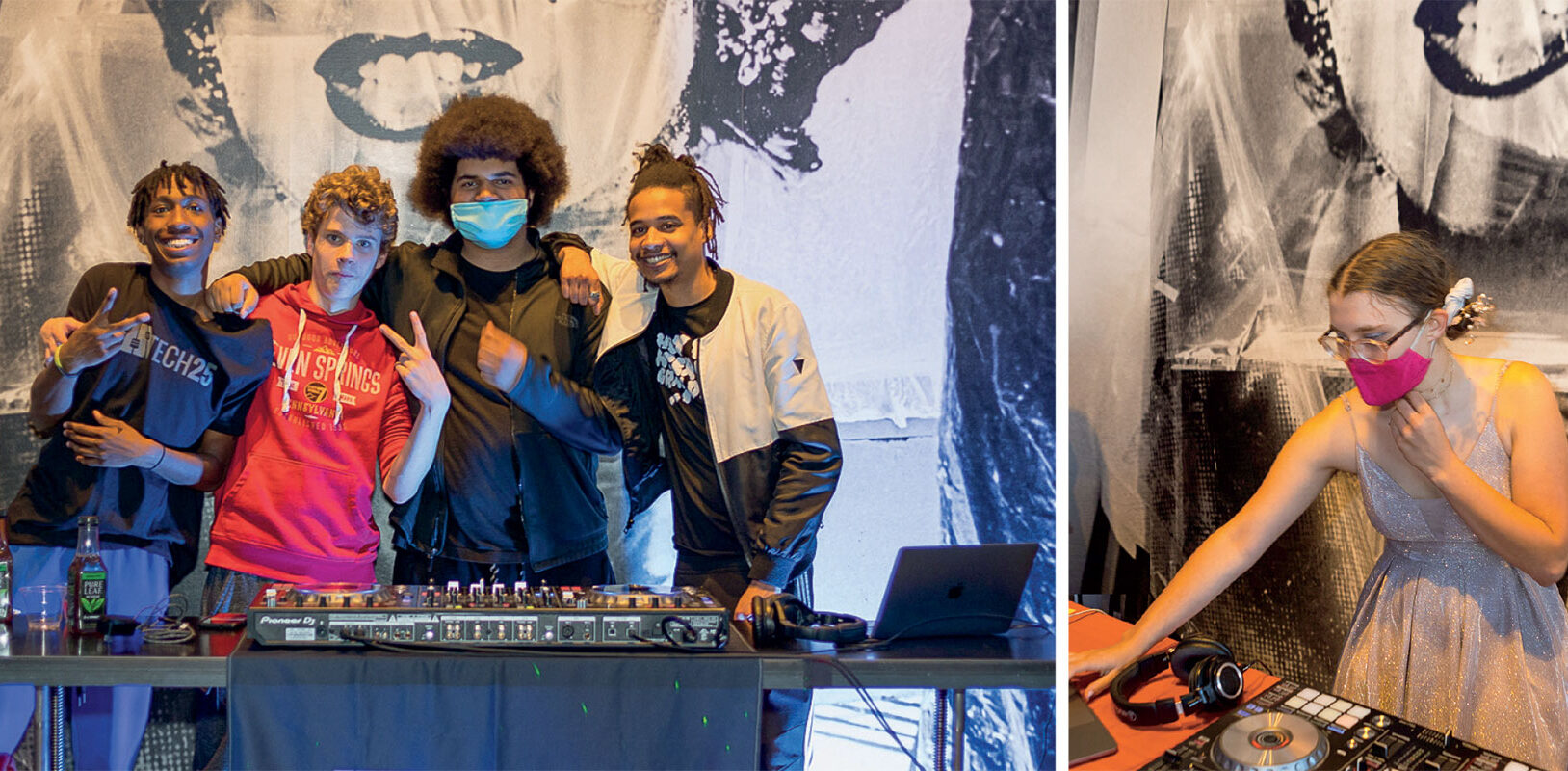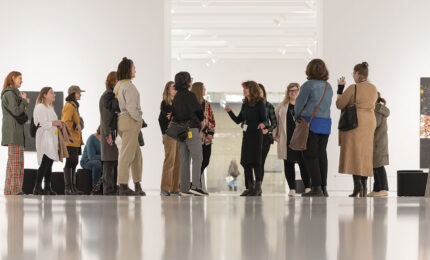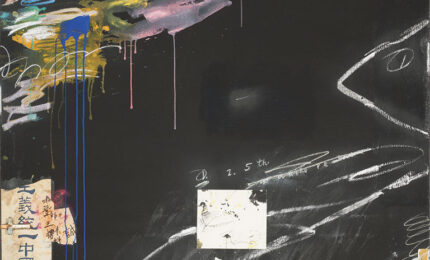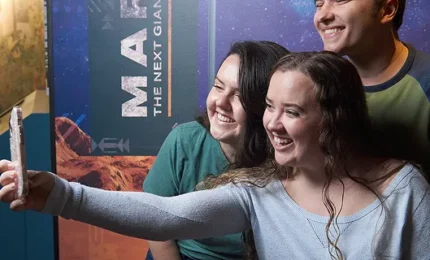Conjure your idea of a DJ. You might think of someone standing alone behind turntables, one ear cupped into headphones, working some strange musical alchemy that, if they’re good, keeps everyone at the wedding or bar mitzvah bouncing on the dance floor.
But the art of DJing is more complex than many imagine. That’s why 16-year-old Earl Morado came to The Andy Warhol Museum one Monday in February—to learn about DJing and where it might take him.
“It’s something cool to learn; something you never saw yourself doing in the future,” Morado says. “If you really like music, why not?”
Morado is one of five teenagers in his cohort that enrolled in The Warhol’s Teen DJ Academy, a six-week-long recurring program that is run in partnership with the nonprofit workforce development organization Tech25. This group of students spent February and March at The Warhol, honing their craft in the museum’s arts education center across General Robinson Street. Using a free iPad app called DJay, two audiovisual professionals taught the teens how to mix songs and run an event from a DJ booth.
Jordan Gilliam, who DJs under the name Young Obama, is the director of education for Tech25. Brendan Pontiere, known locally as B-renn, is a DJ and audio engineer who won Pittsburgh’s 2022 Battlegories DJ competition. While there have been many technological innovations in the profession, Gilliam and Pontiere say the essence of DJing hasn’t changed that much: it’s about controlling the energy while providing continuous music.
“It’s something cool to learn; something you never saw yourself doing in the future. If you really like music, why not?”
– Earl Morado, Teen Dj Academy Student
Huddled around snack-strewn tables, Gilliam and Pontiere advise their young pupils on tempo and selection. With thousands of songs to choose from, students drag and drop the tracks they want to mix onto their iPads’ digital turntables, which mimic scratching vinyl. Each teen brings their personal tastes to the table, but they work together and bounce ideas off of one another—even discovering a love of new artists through their peers’ choices.
In an effort to encourage students to value their own creative work, these teens get paid—$100 for completing all six workshops, and another $100 to perform at a culminating event, The Warhol’s annual Teen Fashion Show.
The goal of a DJ is to set the vibe for an event, Gilliam says. But the skills they learn go beyond party entertainment. Learning to DJ teaches music theory just as a traditional band class might, such as by demonstrating the dynamic between speed and pitch or how to measure tempo. For some kids, the change of instructional method makes it more fun and relatable. Rather than sheet music on a stand, the kids in this class are spinning virtual records and sliding audio controls on a tablet—combining current music with old-school classics as they figure out how each piece works together.
Audiovisual skills are a crucial piece of career readiness. Employers such as hospitals, investment firms, and clothing brands engage their audiences using social media, and music is a critical component. The same skills that DJs employ can be used to create promotional content online. The teens are also learning how to collaborate with peers.
“I never imagined where DJing would take me, and it all started with a phone app,” Pontiere tells the students. “It changed my life.”
Emily Armstrong, the youth programs coordinator at The Warhol, says students find their way to the DJ Academy from all corners of the city. Some discover it through other creative endeavors.
“We’ve built connections with local schools across Pittsburgh, especially art teachers,” Armstrong says.
Naomi Walls, a 13-year-old student from the North Hills, is one of those students with many creative interests. She was surprised to learn that DJing is more flexible than she imagined.
“I’ve learned about all types of music that you can play. I like the music my dad plays,” she says, citing the late Chicago rapper King Von as an example. “Loud music is soothing to me.”
She’s been experimenting with mixing genres to test out her new skills. “I thought as a DJ you had to do this and that—and couldn’t make a mistake. I had the mindset of a cheerleader, which is something else I do.” Instead, she learned that music is forgiving.
The student mixes do have some snags and mistakes. But that’s OK—perfection isn’t required. A missed beat or a fadeout that ends too soon doesn’t ruin a show, much like an errant brushstroke doesn’t ruin a painting. “If you are ever doubting yourself, go for feel,” Pontiere tells the class. ”You’ll be closer than you think.”
Those human flaws become part of the piece—blended into the final product to create something new and entirely unique.
“The cheerleader has started to fade away,” Walls says. “Once I got here, they said you can do your style … do your own thing, be in your own little world. They aren’t mistakes.”







